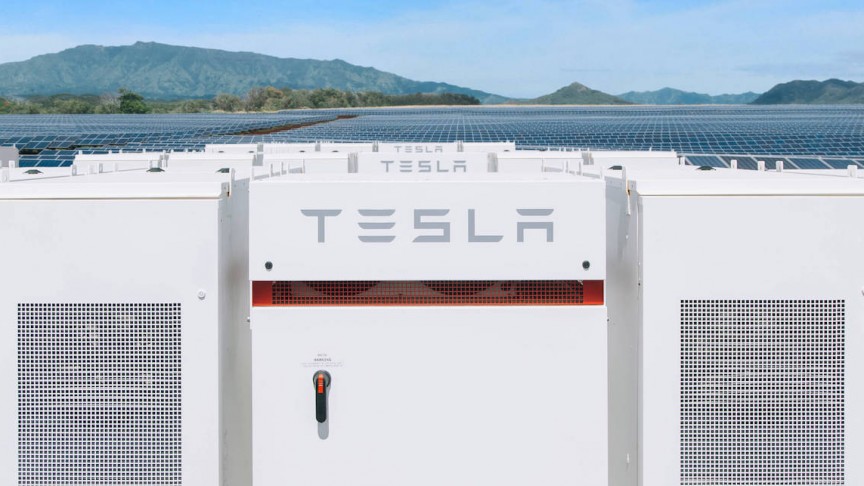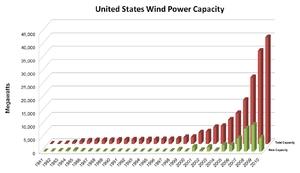Since I live in Germany and those wind energy facilities are more and more destroying the landscape here, I want to share a few thoughts on these things.
Well, as I said, they really do turn the whole countryside into what looks like a factory! And it really bugs me how many people in the world look at Germany as a role model in terms of alternative energy blabla when in fact they are strangling and dividing the population on the countryside so that those people in the big cities slurping their latte can pat themselves on the back on how progressive they are with "green energy"
These industrial wind energy facilities, as they are rightly called by those who oppose them, not only destroy the whole scenery, they are also apparently causing serious health issues, they make loud noises, forests are destroyed because of them, while many people make a lot of money...
There is a good thread on the health risks (so-called Wind Turbine Syndrom) here: https://cassiopaea.org/forum/index.php/topic,24792.0.html
You can find a summary about the health risks here as well: http://www.windturbinesyndrome.com/2013/infrasound-from-wind-turbines-an-overlooked-health-hazard-sweden/
The thing is, people who are not affected by this don't recognize what these monsters do to the scenery. In some regions in Germany you simply have no view on nature anymore - they planted these things on every hill and rob us of any sense of beauty and quiet "oneness with nature". I suspect it's really damaging psychologically. And it's infuriating how helpless we all are - everywhere they want to build these things there are citizen initiatives who oppose them, often very respected and well-connected citizens. But to no avail - the municipalities get huge subsidies, the farmers who "give" their land get something like 30k Euro a year (!), the companies make big bucks etc. etc. Then they have their lobbying organizations that they send in to convince people how great wind energy is and if there's resistance they say "oh, you sure read that on the internet, didn't you? It's all nonsense, here's why..." - that's what I've been told anyway.
Here is a good presentation (German) about the insanity on an economic level of wind energy: http://slideplayer.org/slide/7271586/
And here's a good rundown in English on how insane all of this is even from a purely economic perspective: _https://www.spectator.co.uk/2017/05/wind-turbines-are-neither-clean-nor-green-and-they-provide-zero-global-energy/
To conclude: wind energy is destroying the scenery; it causes health problems; it kills birds; it costs more than it brings revenues (the only incentive to build the facilities are subsidies); if you factor in energy spent for production, raw materials etc. it is mind-bogglingy insane; and even without these considerations, the technology is, on principle, incapable of delivering any significant amount of energy whatsoever.
At least that's how it looks to me: wishful thinking at best, a complete scam at worst. Any thoughts?
Well, as I said, they really do turn the whole countryside into what looks like a factory! And it really bugs me how many people in the world look at Germany as a role model in terms of alternative energy blabla when in fact they are strangling and dividing the population on the countryside so that those people in the big cities slurping their latte can pat themselves on the back on how progressive they are with "green energy"

These industrial wind energy facilities, as they are rightly called by those who oppose them, not only destroy the whole scenery, they are also apparently causing serious health issues, they make loud noises, forests are destroyed because of them, while many people make a lot of money...
There is a good thread on the health risks (so-called Wind Turbine Syndrom) here: https://cassiopaea.org/forum/index.php/topic,24792.0.html
You can find a summary about the health risks here as well: http://www.windturbinesyndrome.com/2013/infrasound-from-wind-turbines-an-overlooked-health-hazard-sweden/
Several studies have found that living near wind turbines often create severe sleep disturbance and depression. They have also found an increased incidence of dizziness, tinnitus, hyperacusis, headache, increased activation of the autonomic nervous system, etc. [3, 4].
In addition to the audible sound, which can provide noise damage and be generally disruptive, mentally, spinning wind turbines also produce a vibrant infrasound that affects the inner ear and the central nervous system without damaging the hearing.
Infrasound is sound with frequencies below 20 Hz, corresponding to wavelengths of 17 meters and above, that is not perceived with normal hearing. This sound, if it is not mitigated substantially, propagates over very long distances. It arises from several sources, such as pulsating flows from chimneys, large eddies (such as wind turbines and large jet engines) and large vibrating surfaces. In scientific studies, infrasound from wind turbines has been measured at levels so low that the sound is not perceived by humans. It has also been determined that infrasound from wind turbines does not give rise to noise damage in the traditional sense [5].
The thing is, people who are not affected by this don't recognize what these monsters do to the scenery. In some regions in Germany you simply have no view on nature anymore - they planted these things on every hill and rob us of any sense of beauty and quiet "oneness with nature". I suspect it's really damaging psychologically. And it's infuriating how helpless we all are - everywhere they want to build these things there are citizen initiatives who oppose them, often very respected and well-connected citizens. But to no avail - the municipalities get huge subsidies, the farmers who "give" their land get something like 30k Euro a year (!), the companies make big bucks etc. etc. Then they have their lobbying organizations that they send in to convince people how great wind energy is and if there's resistance they say "oh, you sure read that on the internet, didn't you? It's all nonsense, here's why..." - that's what I've been told anyway.
Here is a good presentation (German) about the insanity on an economic level of wind energy: http://slideplayer.org/slide/7271586/
And here's a good rundown in English on how insane all of this is even from a purely economic perspective: _https://www.spectator.co.uk/2017/05/wind-turbines-are-neither-clean-nor-green-and-they-provide-zero-global-energy/
Wind turbines are neither clean nor green and they provide zero global energy
We urgently need to stop the ecological posturing and invest in gas and nuclear
The Global Wind Energy Council recently released its latest report, excitedly boasting that ‘the proliferation of wind energy into the global power market continues at a furious pace, after it was revealed that more than 54 gigawatts of clean renewable wind power was installed across the global market last year’.
You may have got the impression from announcements like that, and from the obligatory pictures of wind turbines in any BBC story or airport advert about energy, that wind power is making a big contribution to world energy today. You would be wrong. Its contribution is still, after decades — nay centuries — of development, trivial to the point of irrelevance.
Here’s a quiz; no conferring. To the nearest whole number, what percentage of the world’s energy consumption was supplied by wind power in 2014, the last year for which there are reliable figures? Was it 20 per cent, 10 per cent or 5 per cent? None of the above: it was 0 per cent. That is to say, to the nearest whole number, there is still no wind power on Earth.
Even put together, wind and photovoltaic solar are supplying less than 1 per cent of global energy demand. From the International Energy Agency’s 2016 Key Renewables Trends, we can see that wind provided 0.46 per cent of global energy consumption in 2014, and solar and tide combined provided 0.35 per cent. Remember this is total energy, not just electricity, which is less than a fifth of all final energy, the rest being the solid, gaseous, and liquid fuels that do the heavy lifting for heat, transport and industry.
Such numbers are not hard to find, but they don’t figure prominently in reports on energy derived from the unreliables lobby (solar and wind). Their trick is to hide behind the statement that close to 14 per cent of the world’s energy is renewable, with the implication that this is wind and solar. In fact the vast majority — three quarters — is biomass (mainly wood), and a very large part of that is ‘traditional biomass’; sticks and logs and dung burned by the poor in their homes to cook with. Those people need that energy, but they pay a big price in health problems caused by smoke inhalation.
Even in rich countries playing with subsidised wind and solar, a huge slug of their renewable energy comes from wood and hydro, the reliable renewables. Meanwhile, world energy demand has been growing at about 2 per cent a year for nearly 40 years. Between 2013 and 2014, again using International Energy Agency data, it grew by just under 2,000 terawatt-hours.
If wind turbines were to supply all of that growth but no more, how many would need to be built each year? The answer is nearly 350,000, since a two-megawatt turbine can produce about 0.005 terawatt-hours per annum. That’s one-and-a-half times as many as have been built in the world since governments started pouring consumer funds into this so-called industry in the early 2000s.
At a density of, very roughly, 50 acres per megawatt, typical for wind farms, that many turbines would require a land area greater than the British Isles, including Ireland. Every year. If we kept this up for 50 years, we would have covered every square mile of a land area the size of Russia with wind farms. Remember, this would be just to fulfil the new demand for energy, not to displace the vast existing supply of energy from fossil fuels, which currently supply 80 per cent of global energy needs.
Do not take refuge in the idea that wind turbines could become more efficient. There is a limit to how much energy you can extract from a moving fluid, the Betz limit, and wind turbines are already close to it. Their effectiveness (the load factor, to use the engineering term) is determined by the wind that is available, and that varies at its own sweet will from second to second, day to day, year to year.
As machines, wind turbines are pretty good already; the problem is the wind resource itself, and we cannot change that. It’s a fluctuating stream of low–density energy. Mankind stopped using it for mission-critical transport and mechanical power long ago, for sound reasons. It’s just not very good.
As for resource consumption and environmental impacts, the direct effects of wind turbines — killing birds and bats, sinking concrete foundations deep into wild lands — is bad enough. But out of sight and out of mind is the dirty pollution generated in Inner Mongolia by the mining of rare-earth metals for the magnets in the turbines. This generates toxic and radioactive waste on an epic scale, which is why the phrase ‘clean energy’ is such a sick joke and ministers should be ashamed every time it passes their lips.
It gets worse. Wind turbines, apart from the fibreglass blades, are made mostly of steel, with concrete bases. They need about 200 times as much material per unit of capacity as a modern combined cycle gas turbine. Steel is made with coal, not just to provide the heat for smelting ore, but to supply the carbon in the alloy. Cement is also often made using coal. The machinery of ‘clean’ renewables is the output of the fossil fuel economy, and largely the coal economy.
A two-megawatt wind turbine weighs about 250 tonnes, including the tower, nacelle, rotor and blades. Globally, it takes about half a tonne of coal to make a tonne of steel. Add another 25 tonnes of coal for making the cement and you’re talking 150 tonnes of coal per turbine. Now if we are to build 350,000 wind turbines a year (or a smaller number of bigger ones), just to keep up with increasing energy demand, that will require 50 million tonnes of coal a year. That’s about half the EU’s hard coal–mining output.
Forgive me if you have heard this before, but I have a commercial interest in coal. Now it appears that the black stuff also gives me a commercial interest in ‘clean’, green wind power.
The point of running through these numbers is to demonstrate that it is utterly futile, on a priori grounds, even to think that wind power can make any significant contribution to world energy supply, let alone to emissions reductions, without ruining the planet. As the late David MacKay pointed out years back, the arithmetic is against such unreliable renewables.
The truth is, if you want to power civilisation with fewer greenhouse gas emissions, then you should focus on shifting power generation, heat and transport to natural gas, the economically recoverable reserves of which — thanks to horizontal drilling and hydraulic fracturing — are much more abundant than we dreamed they ever could be. It is also the lowest-emitting of the fossil fuels, so the emissions intensity of our wealth creation can actually fall while our wealth continues to increase. Good.
And let’s put some of that burgeoning wealth in nuclear, fission and fusion, so that it can take over from gas in the second half of this century. That is an engineerable, clean future. Everything else is a political displacement activity, one that is actually counterproductive as a climate policy and, worst of all, shamefully robs the poor to make the rich even richer.
To conclude: wind energy is destroying the scenery; it causes health problems; it kills birds; it costs more than it brings revenues (the only incentive to build the facilities are subsidies); if you factor in energy spent for production, raw materials etc. it is mind-bogglingy insane; and even without these considerations, the technology is, on principle, incapable of delivering any significant amount of energy whatsoever.
At least that's how it looks to me: wishful thinking at best, a complete scam at worst. Any thoughts?










